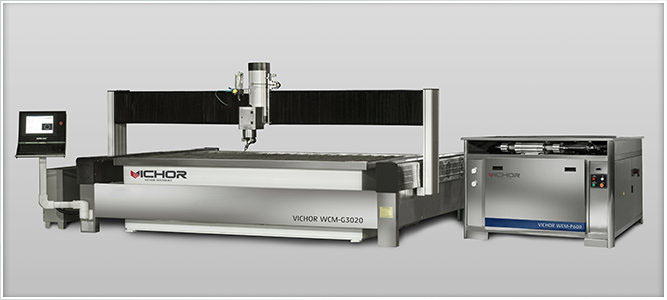
5 Critical Factors to Consider Before Investing in Waterjet Cutting Equipment
The world of manufacturing is filled with cutting-edge technologies, but few offer the raw versatility and material flexibility of waterjet cutting equipment. This powerful technology, which utilizes a supersonic stream of water—often mixed with abrasive garnet—to slice through an astonishing array of materials, has revolutionized prototyping, custom fabrication, and production lines across countless industries. The appeal is undeniable: cold cutting with no heat-affected zones, the ability to cut virtually any material, and exceptional precision.
However, the decision to invest in waterjet cutting equipment is a significant one, fraught with technical considerations and financial implications. Choosing the wrong system can lead to production bottlenecks, runaway operating costs, and an inability to meet project requirements. This in-depth guide will explore the five most critical factors you must evaluate to ensure your investment in waterjet cutting equipment is a resounding success, empowering your business rather than limiting it.
1. Core Technology: Pure Waterjet vs. Abrasive Waterjet Cutting
The first and most fundamental decision point revolves around the type of cutting you need to perform. Not all waterjet cutting equipment is created equal, and the choice between pure and abrasive cutting defines the machine’s entire scope of application.
Pure Waterjet Cutting: This method relies solely on a incredibly thin stream of water, pressurized between 60,000 and 90,000 PSI, and focused through a tiny gemstone orifice (typically sapphire or diamond). The result is a clean, precise, and high-energy stream capable of slicing through soft, non-metallic materials.
Ideal Applications: This is the perfect waterjet cutting equipment for industries like food production (cutting frozen goods, pastries, portioning), textiles and carpet, foam and rubber insulation, paper products, and thin plastics and foils.
Advantages: It produces an extremely narrow kerf (cut width), minimizes material waste, and is a clean process without abrasive contamination. It is also generally faster and cheaper to operate on compatible materials.
Abrasive Waterjet Cutting: This is the more common industrial image of waterjet cutting equipment. It builds upon the pure waterjet by introducing a stream of hard abrasive grit (most often garnet) into the mixing chamber of the cutting head. The ultra-high-pressure water jet accelerates the abrasive particles, transforming the stream into a powerful erosive tool that can cut through hard, dense materials.
Ideal Applications: This is the universal solution. It cuts metals (stainless steel, titanium, aluminum, tool steel), stone and tile (granite, marble), glass (tempered and laminated), composites (carbon fiber, Kevlar), and thick plastics.
Advantages: Unmatched versatility. A single machine can process hundreds of different materials without the need for tool changes, simply by adjusting pressure and abrasive feed rate.
Many modern systems are designed as abrasive waterjets but offer the option to switch to a pure water cutting head, providing the ultimate flexibility for shops that work with both hard and soft materials.
2. The Heart of the System: Pump Technology – Intensifier vs. Direct Drive
The pump is the engine of your waterjet cutting equipment. It is responsible for generating the immense, sustained pressure required for cutting. The choice of pump technology is a major determinant of the machine’s performance, reliability, and long-term operating costs. The two primary types are intensifier pumps and direct drive pumps.
Intensifier Pump: This is the industry workhorse for heavy-duty applications. It uses hydraulic power to drive a piston that intensifies the water pressure, typically operating in the 60,000 to 94,000 PSI range.
Advantages:
Higher Pressure: Delivers faster cutting speeds, especially on thick, hard materials like titanium or thick steel.
Proven Reliability: A robust and time-tested technology known for its durability in demanding production environments.
Constant Pressure: Maintains peak pressure throughout the cut, ensuring consistent cut quality.
Disadvantages:
Higher Initial Cost: Generally more expensive to purchase.
Higher Maintenance: The hydraulic system and reciprocating pistons have more moving parts and can require more involved maintenance.
Energy Efficiency: Can be less energy-efficient due to heat generation in the hydraulic oil, often requiring a cooling system.
Direct Drive Pump: Also known as a crankshaft pump, this simpler design uses an electric motor and a crankshaft to directly pressurize the water. These pumps typically operate in the 40,000 to 60,000 PSI range.
Advantages:
Lower Initial Cost: A more affordable entry point.
Higher Energy Efficiency: Converts more electrical energy directly into water pressure with less heat loss.
Simpler Maintenance: Fewer components and no hydraulic oil make for easier, less frequent maintenance.
Quieter Operation: Generally produces less noise than an intensifier pump.
Disadvantages:
Lower Peak Pressure: This can result in slower cutting speeds on materials over 2-3 inches thick.
Component Wear: The check valves and seals can experience faster wear, potentially leading to more frequent replacements.
The choice hinges on your material portfolio. For a job shop that primarily cuts materials under 2 inches thick, a direct drive pump offers outstanding value. For a shop specializing in thick metals and stone, the power and speed of an intensifier pump are worth the investment.
3. Machine Configuration, Precision, and the Cutting Table
The system that moves the cutting head is critical for accuracy, speed, and the size of parts you can produce. The structural integrity of this system directly impacts the quality of your cuts.
Gantry System: This is the standard for industrial waterjet cutting equipment. The X-axis beam, which carries the Y-axis and cutting head, moves along rails on either side of the table. This design provides exceptional stability and rigidity.
Advantages: Superior accuracy and repeatability over a large area. It can support massive work envelopes (e.g., 10′ x 20′ or larger) and is ideal for handling full-size material sheets. It allows for easy integration with overhead cranes for loading heavy plates.
Linear Drive Technology: The method of moving the gantry is also crucial. High-precision waterjet cutting equipment often uses linear motor drives or precision rack-and-pinion systems instead of simple belt drives. These systems eliminate backlash and provide higher positioning accuracy, faster acceleration, and better cut quality, especially at high speeds and on intricate patterns.
The Cutting Table: Often overlooked, the table is a vital component. It consists of a slatted grid designed to support the material while allowing the spent water and abrasive (swarf) to fall through into a catch tank below. Considerations include:
Slat Material: Hardened steel slats last much longer than mild steel before needing replacement from accidental cuts.
Tank Design: A well-designed tank contains the highly abrasive slurry and facilitates easy cleaning. Some systems offer automated swarf removal systems.
4. The Intelligence: CNC Control Software and Advanced Features
The physical hardware is powerless without sophisticated software to control it. The CNC software is the brain of the operation, translating CAD designs into flawless cutting paths. Modern waterjet cutting equipment is governed by advanced software suites that are key differentiators.
User Interface (UI): An intuitive, graphical UI is essential for efficient operation, reducing training time and programming errors.
Nesting Software: This is a critical feature for profitability. Advanced nesting algorithms automatically arrange parts from multiple jobs onto a single sheet of material to maximize yield and minimize waste, saving significant material costs.
Cut Quality Features:
Taper Compensation: Waterjet streams naturally produce a V-shaped taper. The software can automatically adjust the cutting head’s path to compensate, creating parts with near-perfectly vertical edges.
Piercing Strategies: Software-controlled “soft pierce” or “dwell” techniques minimize the splashback and head wear when initially piercing the material.
5-Axis Cutting: For high-end applications, 5-axis waterjet cutting equipment allows the head to tilt during the cut, enabling the creation of complex beveled edges for welding preparation or 3D contours without taper.
Connectivity: The ability to seamlessly import standard file formats (DXF, DWG, etc.) and integrate with CAD/CAM and ERP systems streamlines the workflow from design to finished part.
5. The True Cost of Operation: Consumables and Maintenance
The purchase price is just the beginning. Understanding and managing the ongoing operational costs is essential for calculating your cost-per-part and achieving ROI on your waterjet cutting equipment.
Abrasive Garnet: This is the largest recurring cost, accounting for up to 2/3 of consumable expenses. Consumption is measured in pounds per hour (e.g., 0.8 to 1.5 lbs/min). Using high-quality, properly sized garnet is crucial; cheap abrasive cuts slower and accelerates wear on other components.
Cutting Head Consumables: The sapphire orifice and tungsten carbide mixing tube are high-wear items. Their lifespan (typically 50-200 hours) depends on water quality and pressure. A regular replacement schedule is a must.
High-Pressure Components: Pump seals, check valves, and intensifier parts will require periodic replacement as part of routine maintenance.
Water and Electricity: While water is recirculated, top-ups and the energy to run the high-pressure pump are measurable costs.
Swarf Disposal: The slurry of spent abrasive and cut material must be collected and disposed of as industrial waste.
Preventative Maintenance: Regular maintenance kits and scheduled service from a technician are investments that prevent costly unplanned downtime.
Selecting the right waterjet cutting equipment is a complex but crucial process that will define your fabrication capabilities for years to come. It is not a decision to be made based on price alone. By carefully weighing these five factors—your required cutting technology, the appropriate pump type, the necessary machine configuration and precision, the capabilities of the control software, and the total cost of ownership—you can move forward with confidence. You will be equipped to choose a system that not only fits your budget but becomes a reliable, profitable, and indispensable centerpiece of your manufacturing operation, capable of turning the most complex designs into flawless reality.
continue reading
Related Posts
- 1371 words6.9 min read
- 1449 words7.3 min read




